Search results for "sofi oksanen/feed/www.booksfromfinland.fi/2012/04/2010/02/let-us-eat-cake"
Kullervo
31 March 1989 | Archives online, Drama, Fiction
An extract from the tragedy Kullervo (1864). Introduction by David Barrett
The plot of the Kullervo story as told in the Kalevala: Untamo defeats his brother Kalervo’s army, and Kalervo’s son Kullervo is born a slave. Untamo sells him as a young child to llmarinen whose wife, the Daughter of Pohjola, makes the boy a shepherd and bakes him a loaf with a stone inside it. Kullervo takes his revenge by sending home a flock of wild animals, instead of cattle, who tear her to pieces. He flees, and discovers that his parents and two sisters are alive on the borders of Lapland. He finds them, but one of his sisters is lost. Life in the family home is unhappy: Kullervo fails in all the tasks his father sets him. On his way home one day he finds a girl in the forest whom he abducts in his sledge and seduces. It turns out the girl is his lost sister, who drowns herself when she learns that Kullervo is her brother. Kullervo sets out to revenge himself on Untamo; he kills and destroys. When he returns home, he finds the house empty and deserted, goes into the forest and falls on his sword.
ACT II, Scene 3
Kalervo’s cottage by Kalalampi Lake. It is night-time. Kimmo, seated by a fire of woodchips, is mending nets. More…
Stories in the stone
2 December 2010 | Extracts, Non-fiction
Extracts from Jägarens leende. Resor in hällkonstens rymd (‘Smile of the hunter. Travels in the space of rock art’, Söderströms, 2010)
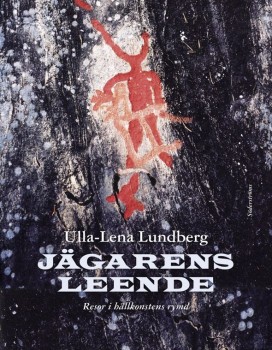 ‘Why do some people choose to expend what is often a great deal of effort hammering images in the bedrock itself, while others conjure up, in the blink of an eye, brilliantly radiant pictures on a rock-face that was empty yesterday but is now peopled by mythological animals, spirits and shamans?
‘Why do some people choose to expend what is often a great deal of effort hammering images in the bedrock itself, while others conjure up, in the blink of an eye, brilliantly radiant pictures on a rock-face that was empty yesterday but is now peopled by mythological animals, spirits and shamans?
‘I think about this often – I who love painting but who still chose a career that involves me sitting and hammering away, day in and day out, like a true rock-carver,’ writes author and ethnologist Ulla-Lena Lundberg in her new book on the art of the primeval man
When the children of Israel went into Babylonian captivity, hanging up their harps on the willow-trees and weeping as they remembered Zion, my sister and I were already sitting by the rivers of Babylon. We knew how they felt. Our father was dead and we had been sent away from our home. We sat there clinging to each other, or rather I was the one clinging to Gunilla, and she had to try to rouse herself and find something for us to do, to give us something else to think about. More…
Northern exposure
21 June 2012 | Reviews
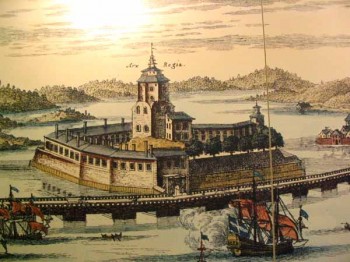
Between Helsinki and St Petersburg: Vyborg. Illustration of Vyborg Castle by an unknown artist, 1709, Wikimedia
Tony Lurcock
‘Not So Barren or Uncultivated’. British travellers in Finland 1760–1830
London: CB Editions, 2010. 230 p.
ISBN 9-780956-107398
£10.00, paperback
Finland is not unique in raising scholars who have often attempted to treat historical travellers’ accounts as source material for historical facts, and then prove how ‘wrong’ they are in relation to reality. This is an unproductive way in which to read them: travel books are nearly always based on the authors’ own country and experiences projected on what they encounter abroad.
Paradoxically, much of what was written about foreign countries in the past was really about conditions and problems in the author’s own land, and can be understood only against that background – something that also emerges in this book about British travellers in Finland. More…
Losing it
31 March 2002 | Archives online, Fiction, Prose
An extract from the novel Jalat edellä (‘Feet first’, Otava 2001). Introduction by Kanerva Eskola
Once he had sat in the car for a while Risto could feel his thoughts slowly becoming clearer. Tero had been killed by a lorry. He couldn’t think particularly actively about it but perhaps he could have said it out loud. After all, people often say all kinds of things that they don’t think. Maybe even too often, he wondered and decided to have a go.
‘Tero is dead,’ he said and the words tasted of preserved cherries.
In the changing room at the swimming pool Risto noticed that his swimming trunks and towel were mouldy. He had forgotten to hang them up to dry after the last time he went swimming. That was a thousand years ago and now a bluish grey fur was growing on them. He examined the bitter smelling mould on his trunks; the fur was beautiful, smooth and silky like a rabbit’s coat. He gently stroked his trunks. I can use these for ice swimming, he decided, and began to chuckle quietly to himself.
Growing together. New Finnish children’s books
28 January 2011 | Articles

Hulda knows what she wants! From the cover of a new picture book by Markus Majaluoma (see mini reviews*)
What to choose? A mum or dad buys a book hoping it will be an enjoyable read at bedtime – adults presume a book is a ‘good’ one if they themselves genuinely enjoy it, but children’s opinions may differ. Päivi Heikkilä-Halttunen reviews the trends in children’s literature published in Finland in 2010, and in the review section we’ve picked out a handful of the best on offer
Judging by the sheer number and variety of titles published, Finnish children’s and young people’s fiction is alive and well. If I had to describe the selection of books published in 2010 in just a few words, I would have to point to the abundance of titles and subject matters, and the awareness of international trends.
Since 2000 the number of books for children and young people published in Finland each year – including both translated and Finnish titles – has been well in excess of 1,500, and increasing, and this growth shows no signs of slowing down.
Little boys, ten-year-olds who don’t read very much and teenage boys, however, were paid very little attention last year. Although gender-specificity has never been a requirement of children’s fiction, boys are notably pickier when it comes to long, wordy books, especially those that might be considered ‘girly’. More…
The Earth is a snowball
31 March 1995 | Archives online, Prose
A short story from Resa runt solen (‘Journey round the sun’, Schildts, 1994). Introduction by Ann-Christine Snickars
It is a day in August and even though I can sense that the end of the summer is nearer than the beginning, my hours are still as long as days. I am a child and live in the midst of summer’s eternity.
This morning I wake up earlier than anyone else. It isn’t usually that way. Usually Mårten is the first of us two to get up, but now he is asleep with his face turned to the wall. I stay in bed for a while, listening. It is also quiet in the other room, where Mama is asleep. Now I remember that it’s today Papa is coming out to see us after working in the town all week.
I open the curtain a little and see that the sky is blue and not grey with heavy rainclouds as it has been these past few days. I quickly put on my few clothes, a thin striped cotton sweater, my shorts and my brown plimsolls. I push the door open, stand on the steps and breathe a morning air that still smells more of summer than of autumn. I listen to the familiar sounds: twittering birds, the wind in the treetops and crying gulls over the bay. More…
Green gold, black gold
31 March 2001 | Archives online, Fiction, poetry
Poems from Jakutian aurinko (‘The Yakutian sun’; Tammi, 2000). Introduction by Kari Sallamaa
So this, then, is Tomsk,
a town, tumbling into snow.
Even its lanes rise up into the sky.
No longer fragrant the pine,
the juniper, not even the gardens.
Can’t trust the skirts,
above the rooftops,
stripes are beaten out of the carpet,
yellow and turquoise for the horizon,
under the rooftops, fingernails
rip the wallpaper,
those white frost fingernails.
So, this is Tomsk,
in its streets the Volgas zip by.
And when I get a ride, the back seat fills up in no time.
Breath steams, nylon rips. The ladies
apply lipstick, unconcerned. More…
In other words
21 June 2012 | This 'n' that
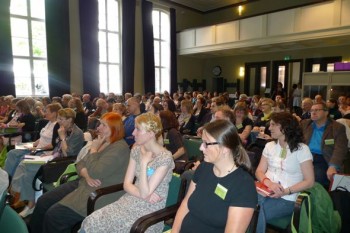
Wordworkers meet: the translators' congress in Helsinki, 11–14 June. Photo: Hannele Jyrkkä
From Finnish or Swedish into 32 languages: in mid June FILI (the Finnish Literature Exchange) held the biggest international meeting of translators of Finnish literature of all time.
The congress, entitled Kääntäjän sana/Översättarens ord (Translator’s word) was planned with one eye on the Finnish theme of the 2014 Frankfurt Book Fair.
The former Lisa Hagman School, now the House of Learning, offered the premises for workshops and lectures for 120 professional translators and almost 70 scholars of language and literature.
Participants translating from both Finnish and Finland-Swedish were offered opportunities to meet writers, listen to lectures from experts in language and literature and gain feedback from other active professional readers. More…
Best-selling books in September
15 October 2010 | In the news
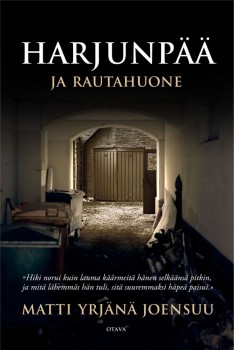 In September, Finns read crime novels. Matti Yrjänä Joensuu’s latest book featuring his police protagonist Timo Harjunpää, Harjunpää ja rautahuone (‘Harjunpää and the iron room’, Otava), topped the Booksellers’ Association of Finland’s best-seller list.
In September, Finns read crime novels. Matti Yrjänä Joensuu’s latest book featuring his police protagonist Timo Harjunpää, Harjunpää ja rautahuone (‘Harjunpää and the iron room’, Otava), topped the Booksellers’ Association of Finland’s best-seller list.
Joensuu’s Harjunpää ja pahan pappi was published in English in 2006 and reissued in 2008 under the title Priest of Evil. A film adaptation will be released in Finland in late October, directed by Olli Saarela and starring Peter Franzén in the title role.
Number two was the latest thriller from the pseudonymous Ilkka Remes, Shokkiaalto (‘Shock wave’, WSOY), and number three was Leena Lehtolainen’s Minne tytöt kadonneet (‘Where have all the young girls gone’, Tammi).
Sofi Oksanen’s record-breaking seller and critical success Puhdistus (WSOY; English edition: Purge, Atlantic Books) held strong in fourth place.
In translated fiction, Paul Auster, Diana Gabaldon ja Paulo Coelho headed the list.
The non-fiction list was topped by a study of sociability and social skills by Liisa Keltikangas-Järvinen (Sosiaalisuus ja sosiaaliset taidot, WSOY). Readers seem to be interested in survival, as the number two book was in a similar vein, Lilli Loiri-Seppä’s Selviämistarinoita (‘Stories of coping’ – also translatable as ‘Stories about getting sober’, Gummerus), about how to stop drinking.
Walt Disney was missing again from the top of the children’s list, the number one and number two spots being taken by Finnish picture books, Tatu ja Patu supersankareina (‘Tatu and Patu as superheroes’, Otava) by Aino Havukainen and Sami Toivonen, and Hurja-Harri ja pullon henki (‘Scary Harry and the genie in the bottle’, Otava) by the veteran graphic artist and children’s book author Mauri Kunnas. A new installment of the Ella storybook series by Timo Parvela, Ella ja Yön ritarit (‘Ella and the Knights of the Night’, Tammi) held the number three spot. In September, Finns read crime novels. Matti Yrjänä Joensuu’s latest book featuring his police protagonist Timo Harjunpää, Harjunpää ja rautahuone (‘Harjunpää and the iron room’, Otava), topped the Booksellers’ Association of Finland’s best-seller list.
From the land of abundant reindeer…
17 March 2011 | This 'n' that
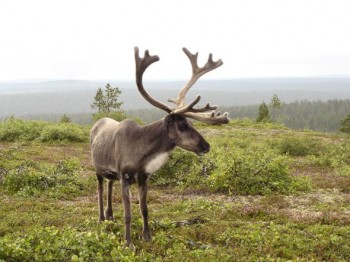
Rangifer tarandus, Finnish Lapland. Photo: Grand-duc (http://en.wikipedia.org/wiki/User:Grand-Duc)
Is Finland, a land of reindeer, ‘dense pine forests and deep snows’ also a ‘quiet literary landscape’?
Not exactly, as we at Books from Finland hope we are demonstrating. And over on the Bookslut website, Bonnie B. Lee comes to the same conclusion, after having mused about the reindeer (yes: in Helsinki you find tasty chunks of them in the freezer boxes of any foodstore) and reading three Finnish novels in English translation.
The novels Lee reviews are Purge by Sofi Oksanen (Puhdistus, 2008, translated by Lola Rogers, published last year), When I forgot by Elina Hirvonen (Että hän muistaisi saman, 2005, translated by Douglas Robinson, published in 2009) and The Year of the Hare by Arto Paasilinna (Jäniksen vuosi, 1975, first published in an English translation by Herbert Lomas in 1995, reprinted as a Penguin edition last year).
We have just entered the Year of the Rabbit, in recognition of which Paasilinna’s book (about a man who rejects his old life and goes roaming the wildernesses with a hare as his only companion) has appeared on the tables of large bookstores in the US. ‘The Year of the Hare is only the most Finnish, and perhaps most antically Zen-ish, of a shelf-load of books that tell us to find and live by our own ideas of contentment,’ said The Wall Street Journal.
The traumatic experiences of war and Finland’s deep forests are the common feature of these novels, Bonnie B. Lee finds. She also opines that ‘melancholy pervades the Finnish psyche’, and that ‘Finland vies with Hungary for highest suicide rate in Europe‘. Oh, but this latter is no longer true: number one on a World Health Organisation suicide rates list is Lithuania, followed by Hungary, Slovenia, Estonia and Latvia – Finland is number six.
Lee is clearly intrigued by her travels in contemporary Finnish literature. ‘The search for identity, a reckoning with a troubled past, and an outsider’s view looking in,’ she comments, ‘are all the stuff of great writing, and Finland is poised to continue to produce poignant and introspective literature that we can appreciate now that English translators have begun the work.’
Poignant and introspective or occasionally funny and fantastical, this is the work we try to offer an early glimpse of, in translation, at Books from Finland. Stay with us!
The books that sold in May
10 June 2011 | In the news
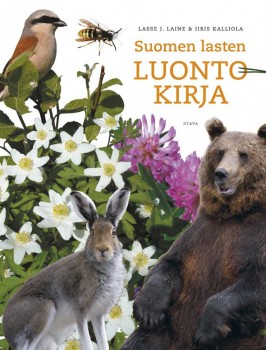 In May the Bookseller’s Association of Finland’s list of the best-selling Finnish fiction was still topped – as it was in March – by a collection of poems: Heli Laaksonen’s Peippo vei (‘The chaffinch took it’, Otava) is written in a local dialect spoken in south-western Finland. See our introduction to Laaksonen’s new poems.
In May the Bookseller’s Association of Finland’s list of the best-selling Finnish fiction was still topped – as it was in March – by a collection of poems: Heli Laaksonen’s Peippo vei (‘The chaffinch took it’, Otava) is written in a local dialect spoken in south-western Finland. See our introduction to Laaksonen’s new poems.
Pirjo Rissanen’s novel Äitienpäivä (‘Mother’s day’, Gummerus) was number two and Seppo Jokinen’s crime story, Ajomies (‘The driver’, Pulitzer/Crime Time) number three.
Tuomas Kyrö’s short prose about a grumpy old man resisting all sorts of contemporary fads, Mielensäpahoittaja (‘Taking offence’, WSOY), was number four.
Sofi Oksanen’s hugely successful novel about women and Estonian history, Puhdistus (WSOY, 2008) – English version: Purge –, still occupies number five on the list.
The most popular books for children and young people in May was the Finnish translation of a classic, Saint-Exupéry’s Le Petit Prince. A nature book for children, Suomen lasten luontokirja by Lasse J. Laine and Iiris Kalliola, was number two, and the cartoon kids Tatu and Patu occupied the third place (both published by Otava): Tatun ja Patun Suomi (‘Tatu and Patu’s Finland’), written and illustrated by Aino Havukainen and Sami Toivonen.
The translated fiction list was – as in March – topped by Maalattujen luolien maa (The Land of Painted Caves), by Jean M. Untinen-Auel, an American writer with Finnish roots. The novel is set in the late Paleolithic era.
On the non-fiction list there were books, in particular, on cooking, gardening, birds – and diets.
Literary prizes
15 November 2008 | In the news
In November six novels were shortlisted for the twenty-fifth Finlandia Prize for Fiction, to be awarded on 4 December.
Best-selling books in September
18 October 2012 | In the news
Number one on the September list of best-selling Finnish fiction titles, compiled by the Finnish Booksellers’ Association, is Sofi Oksanen’s new novel Kun kyyhkyset katosivat (‘When the doves disappeared’, Like): which shot straight to the top of the list on its publication in August.
The huge national and international success of her previous novel, Puhdistus – in English, Purge – published in 2008 and also set in Estonia, has paved the way for Kun kyyhkyset katosivat; translation rights have been sold to several countries already.
Number two on the list was Riikka Pulkkinen’s third novel, Vieras (‘The stranger’, Otava). In third and fourth places were two new thrillers, Paholaisen pennut (‘The devil’s cubs’, Tammi), by Leena Lehtolainen, and Ylösnousemus (‘Resurrection’, WSOY), by Ilkka Remes.
In fifth place was Sirpa Kähkönen’s novel Hietakehto (‘Sand cradle’, Otava): number six in her series set in the Kuopio region of eastern Finland, during the Second World War.
The non-fiction (translated foreign as well as Finnish) list was topped by Blaine Harden’s Escape from Camp 14 (in North Korea; Gummerus). The variety of subjects on this list can be surprising: number two is about angels (Lorna Byrne’s A Message of Hope from the Angels, Otava), number three a biography of a Finnish ex-con turned surgeon (Veitsen terällä, ‘On knife’s edge’, by Arno Kotro & Christer Lybäck, Otava), number four about the Cold War in Finland (Jukka Tarkka: Karhun kainalossa, ‘Under the arm of the bear’, Otava) and number five about cupcakes (by Angela Drake, Otava)…
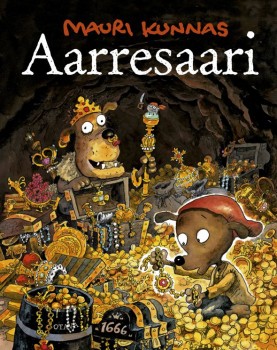
Mauri Kunnas: Aarresaari
The three best-selling children’s books were by seasoned Finnish authors: illustrator-writer Mauri Kunnas, with his tribute to R.L Stevenson, Aarresaari (‘Treasure island’, Otava), Aino Havukainen & Sami Toivonen, with Tatu ja Patu pihalla (‘Tatu and Patu outdoors’, Otava) and Sinikka Nopola & Tiina Nopola, with their Risto Räppääjä ja nukkavieru Nelli (‘Risto Rapper and Threadbare Nelly’, Tammi).
New from the archives
13 February 2015 | This 'n' that
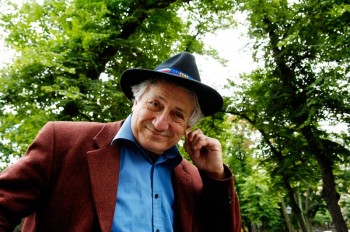
Daniel Katz. Photo: Veikko Somerpuro/WSOY.
In the midst of today’s richly cosmopolitan literary scene – we’re thinking of blockbusters like Sofi Oksanen’s Puhdistus (Purge, 2008), or Patjim Statovci’s Kissani Jugoslavia (‘My cat Yugoslavia’, 2014) (linkit) – it’s hard to imagine the colour and excitement represented by the work of Daniel Katz (born 1938) from the publication of his first book, Kun isoisä Suomeen hiihti (‘When grandfather skied to Finland’, 1969) onward. Characterised by dark humour, gentle irony, a wild imagination and a profound world view, Katz’s writing is informed but never defined by his outsider status as a Jew writing in Finnish.
Today’s story, taken from Katz’s book Talo Sleesiassa (‘A house in Silesia’) describes the journey taken by Erwin, a German Jew, to visit the home he lived in before the Second World War. Katz has a fine grasp of the ironies of history:
‘We arrived at the city of his birth, which currently is referred to as The City, for the sake of simplicity and tact: the town has – used to have, rather – two names, a German and a Polish, and one or the other party might take offence. My brother-in-law had in fact been born in a city whose name began with a B, though now it began with a W. Evolution of this kind is called phonetic history.’
The extract is accompanied by an interview of Daniel Katz by Daniel Katz.
*
The digitisation of Books from Finland continues apace, with a total of 356 articles and book extracts made available online so far. Each week, we bring a newly digitised text to your attention.
Springtime in Paris: Nordic writers on a French visit
25 March 2011 | In the news
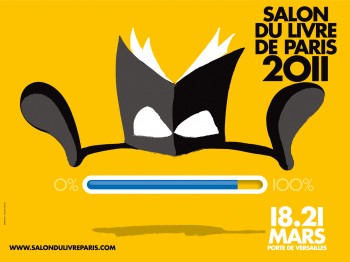 With an icy northerly wind at my back I took off from Helsinki and landed in Paris, where it was springtime and the cherry trees were in bloom. The aim of my trip was to join eleven translators from Finnish into all the main Nordic languages in examining the trickiest corners of the Finnish language and discussing the actual working conditions of literary translators, as well as the possibilities for Nordic literature to assert itself in the world.
With an icy northerly wind at my back I took off from Helsinki and landed in Paris, where it was springtime and the cherry trees were in bloom. The aim of my trip was to join eleven translators from Finnish into all the main Nordic languages in examining the trickiest corners of the Finnish language and discussing the actual working conditions of literary translators, as well as the possibilities for Nordic literature to assert itself in the world.
I was also going to meet with and listen to more than sixty writers from all the Nordic countries. Why did I have to go to Paris to do it? Because this was where Bokskogen, the Forest of Books, had grown.
At the Salon du Livre held in Paris from 18 to 21 March, at which the Nordic countries were the guests of honour, FILI (the Finnish Literature Exchange) was in charge of coordinating the Nordic pavilion, some 400 square metres in area.
The airy Scandinavian Forest of Books was filled with the murmur of Parisians in search of something Nordic to read and intent on having their newly purchased books signed by authors like Sofi Oksanen, Kari Hotakainen, Matti Rönkä, Monika Fagerholm, Katarina Gäddnäs, Seita Parkkola, Aira Savisaari, Johanna Sinisalo, Aino Havukainen and Sami Toivonen.
Before the official inauguration by France’s Minister of Culture Frédéric Mittérand the programmes had already been underway for four days. Just over a hundred professional people – publishers, translators and other cultural figures and institutions from across the Nordic countries – took part in various workshops to discuss common focal points and share experiences and best practices with each other and their French colleagues.
One of the major events was the Cultural Forum, a collaboration between FILI, the Nordic Council of Ministers and the Finnish presidency of the Nordic Council of Ministers. Its theme was the training of translators, and also the book industry in a global context.
In early March a dozen French journalists and booksellers toured Helsinki and Tammisaari (Ekenäs) in order to meet Finnish authors and interview them as a prelude to the big show. As a result Nordic literature also made its presence felt in France’s press and bookstores.
Translated by David McDuff
